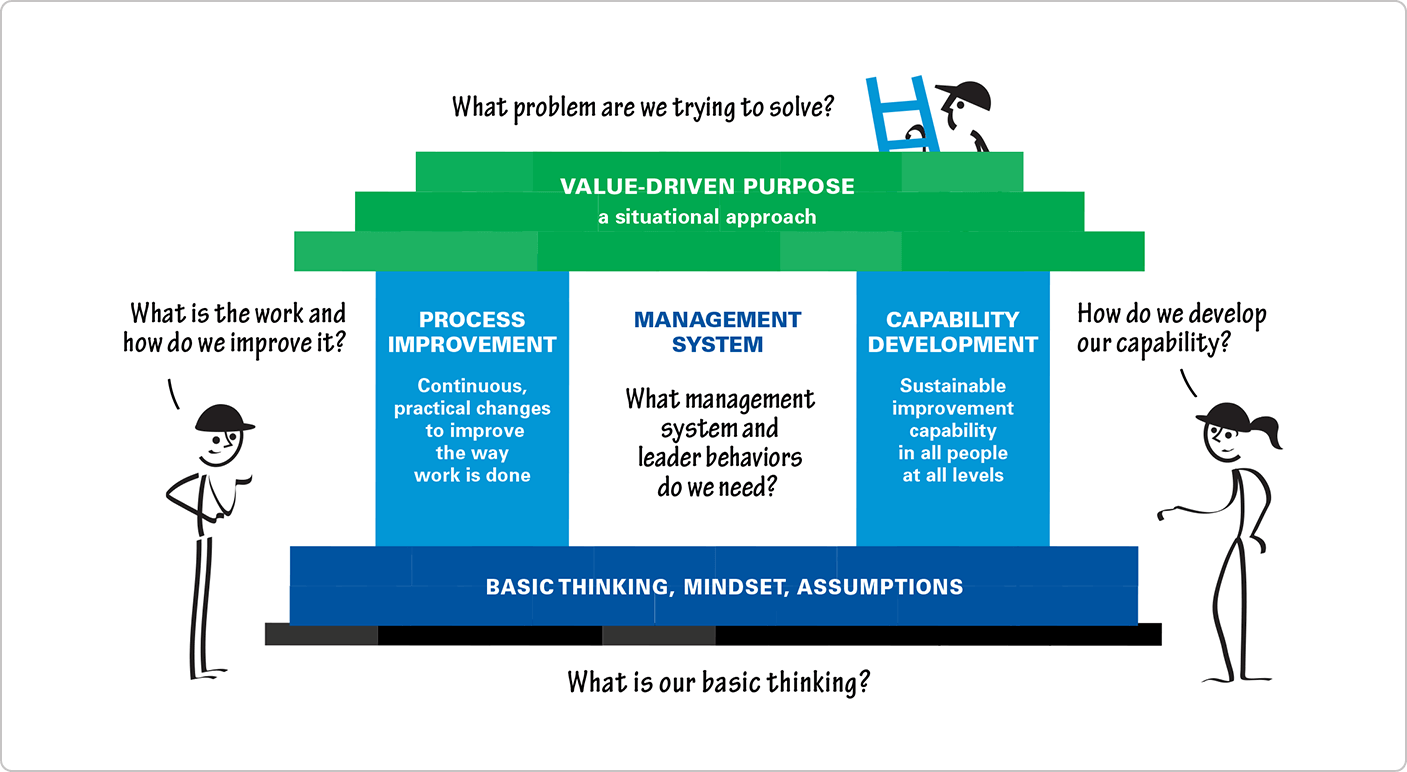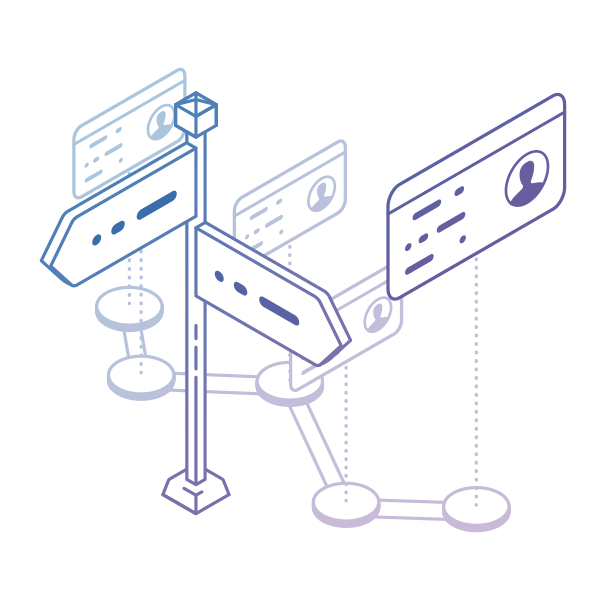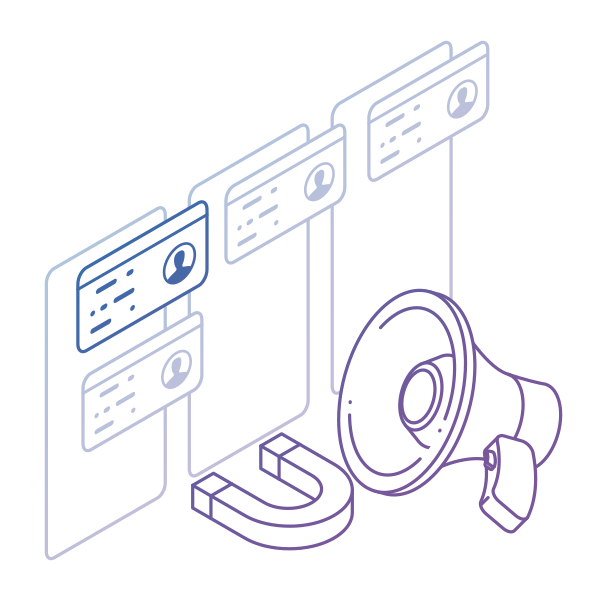Key Takeaways
- What is Lean transformation: A structured yet flexible process to shift your organization's mindset, workflows, and culture to maximize value and eliminate waste.
- Why pursue Lean transformation: To solve recurring problems, improve agility, reduce delivery delays, and embed continuous improvement into your DNA.
- Core focus areas: Purpose-driven change, process improvement, people development, responsible leadership, and cultural evolution.
- How to start: Evaluate your current state, get leadership support, invest in training, and explore Lean tools.
- How to measure success: Through cycle times, throughput, service-level expectations, and company-wide capability for learning and adaptation.
What Is Lean Transformation?
Lean transformation is the process of shifting from traditional work management to a value-driven approach. It's not just about cutting costs or speeding up workflows - it's about transforming how your organization thinks, works, and leads.
It's a journey that starts with identifying your real problems and ends in a culture of continuous improvement. Whether it's a team, department, or enterprise-wide effort, Lean transformation aims to optimize the flow of value from idea to delivery - eliminating waste, enhancing collaboration, and increasing organizational agility along the way.
 Visualization of the Lean Transformation Framework (LTF); Image credit: Lean Enterprise Institute
Visualization of the Lean Transformation Framework (LTF); Image credit: Lean Enterprise Institute
Why Organizations Pursue Lean Transformation
Most organizations pursue Lean transformation because something isn't working - projects are late, customers are frustrated, or teams are constantly overwhelmed. Lean helps solve these problems by introducing clarity, focus, and agility into the way work happens.
Lean transformation also helps organizations:
✔️ Adapt to market shifts and customer demands
✔️ Improve employee engagement and team accountability
✔️ Deliver value faster and more predictably
✔️ Scale agility without chaos
It's especially powerful in knowledge work environments where complexity, delays, and dependencies often block progress.
What Are the 5 Key Focus Areas of Lean Transformation?
The Lean Transformation Model (developed by the Lean Enterprise Institute) is structured around five key questions:
1. What problem are we trying to solve?
Lean begins with clarity. Don't aim for everything at once - start by focusing on one or two real pain points (e.g., slow time-to-market, poor quality, inefficient handoffs). The entire organization should understand and align around this goal.
2. How are we improving the actual work?
You need to identify which processes must change. Utilize techniques such as Value Stream Mapping, Kanban boards, or the PDCA (Plan-Do-Check-Act) approach to initiate small, measurable experiments. Improvement is iterative - build a better version, validate it, and scale what works.
3. How are we building capability?
Developing people is key. Managers should lead by teaching - not delegating - Lean thinking. Train change agents first, give them time and space, and then expand the learning across the org. This builds long-term capability, not short-term compliance.
4. What leadership behaviors are required?
True Lean leaders empower, not control. They should:
- Promote shared decision-making
- Lead by example
- Track meaningful KPIs, not vanity metrics
- Encourage experimentation - even failure
Your leadership system should be designed to reinforce learning, agility, and accountability.
5. What mindset and culture do we need?
Culture is the heart of Lean. Without evolving mindsets, your tools won't work. Start by evaluating your current culture - are people afraid to speak up? Do managers hoard decisions?
Lean culture requires:
- Openness to change
- Shared ownership of outcomes
- A bias for action and learning
Changing culture doesn't start with posters. It starts with leadership modeling the behaviors they want to see - consistently.
| Core Question | Focus Area | What to Consider / Do |
| What problem are we trying to solve? | Situational Approach | Align around a shared purpose; identify and document the real challenges |
| How are we improving the actual work? | Process Improvement | Define targeted changes; run small experiments using PDCA, Kanban, etc. |
| How are we building capability? | Capability Development | Train leaders first; support people through mentorship and internal knowledge sharing |
| What leadership behaviors and systems are needed? | Responsible Leadership | Promote shared leadership; lead by example; track and act on meaningful KPIs |
| What mindset and assumptions drive this transformation? | Basic Thinking & Mindset | What mindset and assumptions drive this transformation? |
How to Start a Lean Transformation
Lean transformation unfolds through eight stages. Here's a simplified roadmap:
Step 1: Evaluate Your Situation
Ask the big questions: What isn't working? Where are the biggest bottlenecks? Choose whether to start small (safer, slower) or go all-in (riskier, but faster impact).
Step 2: Get Leadership Buy-In
No C-level commitment = no transformation. You need a sponsor who owns the problem and will advocate for change when it gets tough.
Step 3: Train Your People
Start with management. They must have a solid understanding of Lean to teach and support others effectively. Form a core team of change agents - ensure they have sufficient time (at least 50%) to lead the transformation.
Step 4: Visualize One Service
Pick one team or workflow to start. Use Kanban boards or Upstream Kanban to map how work flows in and out. Make blockers visible. Start measuring flow.
Step 5: Analyze & Optimize
Introduce shared metrics: Cycle time, Throughput, Work in Progress - ditch guesswork like story points in favor of data-backed planning.
Step 6: Scale Across Services
Extend your value stream mapping across the organization - link upstream activities (e.g., strategy, idea intake) to downstream delivery (e.g., customer deployment) to create a comprehensive view.
Step 7: Establish Portfolio Governance
Use Portfolio Kanban to track initiatives across teams. Set up regular review cadences. Visualize dependencies, flow, and progress at every level.
Step 8: Embed Continuous Improvement
Use PDCA loops. Reflect, adapt, and try again. Improvement becomes part of the culture - not just a phase.
What Pitfalls Can Hinder Your Lean Transformation?
❌ Lack of clarity on the "why"
❌ No executive support
❌ Skipping people development
❌ Treating Lean as a toolset, not a mindset
❌ Trying to fix everything at once
❌ Using the wrong metrics (e.g., story points vs. cycle time)
Avoid these by aligning everyone on the problem, committing to training, and treating Lean as a cultural journey.
How Do You Measure Success in a Lean Transformation?
Track metrics that reflect flow and learning:
- Cycle Time: How long does work take?
- Throughput: How much can we deliver in a time frame?
- WIP: How many things are in progress at once?
- Blocker Time: Where and why does work get stuck?
- SLEs (Service Level Expectations): Can we make reliable delivery promises?
Utilize digital lean platforms like Businessmap, which offers rich dashboards and analytics modules to visualize these metrics over time, identify trends, and drive significant improvements.
Final Thoughts
Lean transformation isn't about installing a framework or cutting costs. It's about evolving how your organization works - by aligning around purpose, improving flow, developing people, and embracing a culture of learning.
Businessmap is the most flexible software
to align work with company goals






